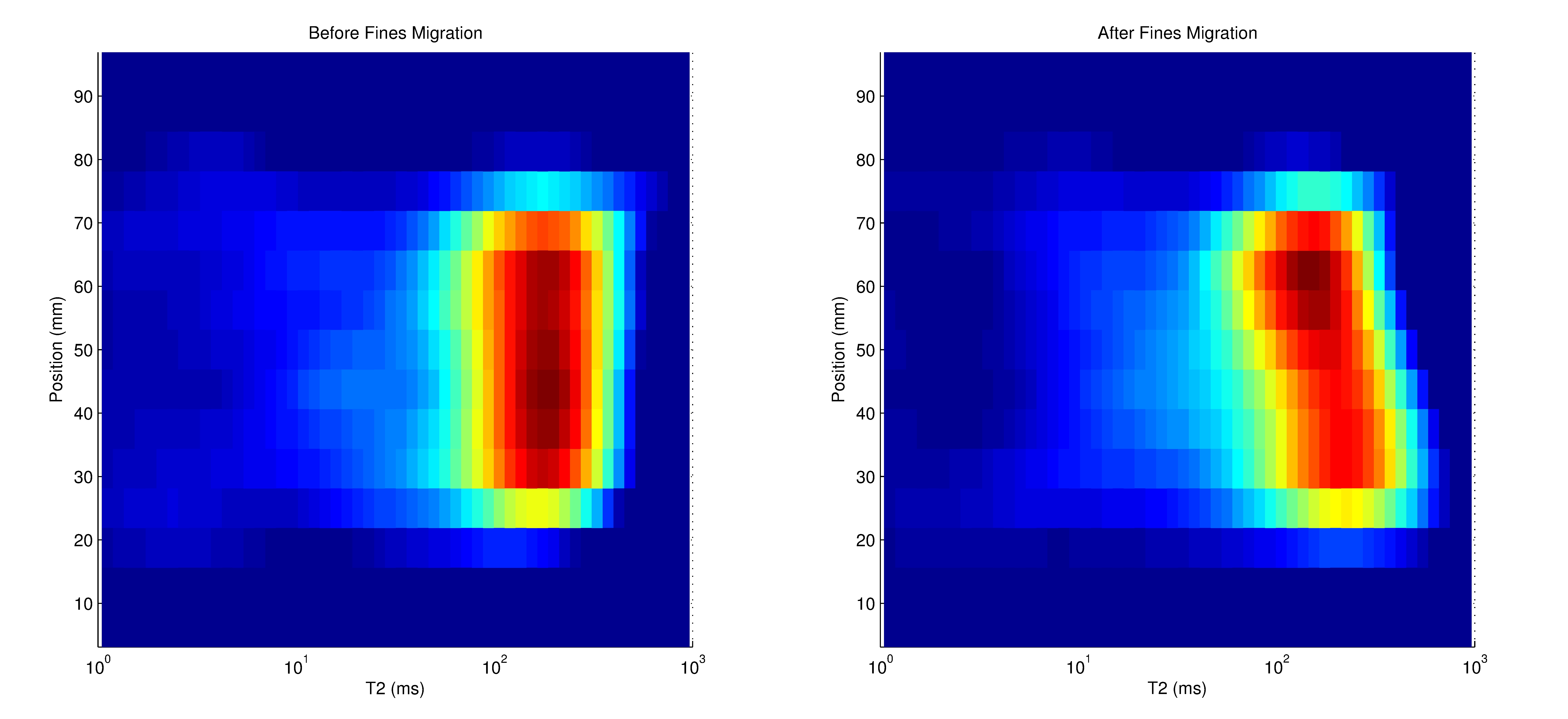MRI of Fines Migration in Berea Sandstone
- 1. University of New Brunswick, Department of Chemical Engineering, Fredericton, Canada
- 2. University of New Brunswick, MRI Research Centre, Department of Physics, Fredericton, Canada
Fines migration is a phenomenon of practical importance in the petroleum production and drilling industry. Clay particle peptization, induced by incompatible aqueous phase chemistry, obstructs pore throats downstream of the fluid flow leading to permeability reductions that can be as large as two orders of magnitude [A1] . Magnetic resonance imaging (MRI) methods based on Carr-Purcell-Meiboom-Gill (CPMG) are able to map T2 distributions in porous rocks, hence showing the spatial variation of the pseudo pore size distribution [A2] .
The traditional water-shock experiment is used to mobilize kaolinite in the aqueous phase flowing in a Berea core plug. Spin Echo - Single Point Imaging (SE-SPI), a phase encoding MRI method based on the CPMG method, is utilized to determine spatially resolved T2 spectra of the sample, and therefore the pseudo pore size distribution.
The shift in the T2 spectra of the core inlet and outlet show opposite trends. The pore size distribution of the inlet and outlet, inferred from T2 distributions, are shifted to larger and smaller values respectively.

- [A1] Kartic C. Khilar, H. Scott Fogler, (1983), Water Sensitivity of Sandstones, Society of Petroleum Engineers, Society of Petroleum Engineers journal, 55-64
- [A2] Oleg V. Petrov, Geir Atle Ersland, Bruce J. Balcom, (2011), T2 distribution mapping profiles with phase-encode MRI, Elsevier, Journal of Magnetic Resonance, 39-46
